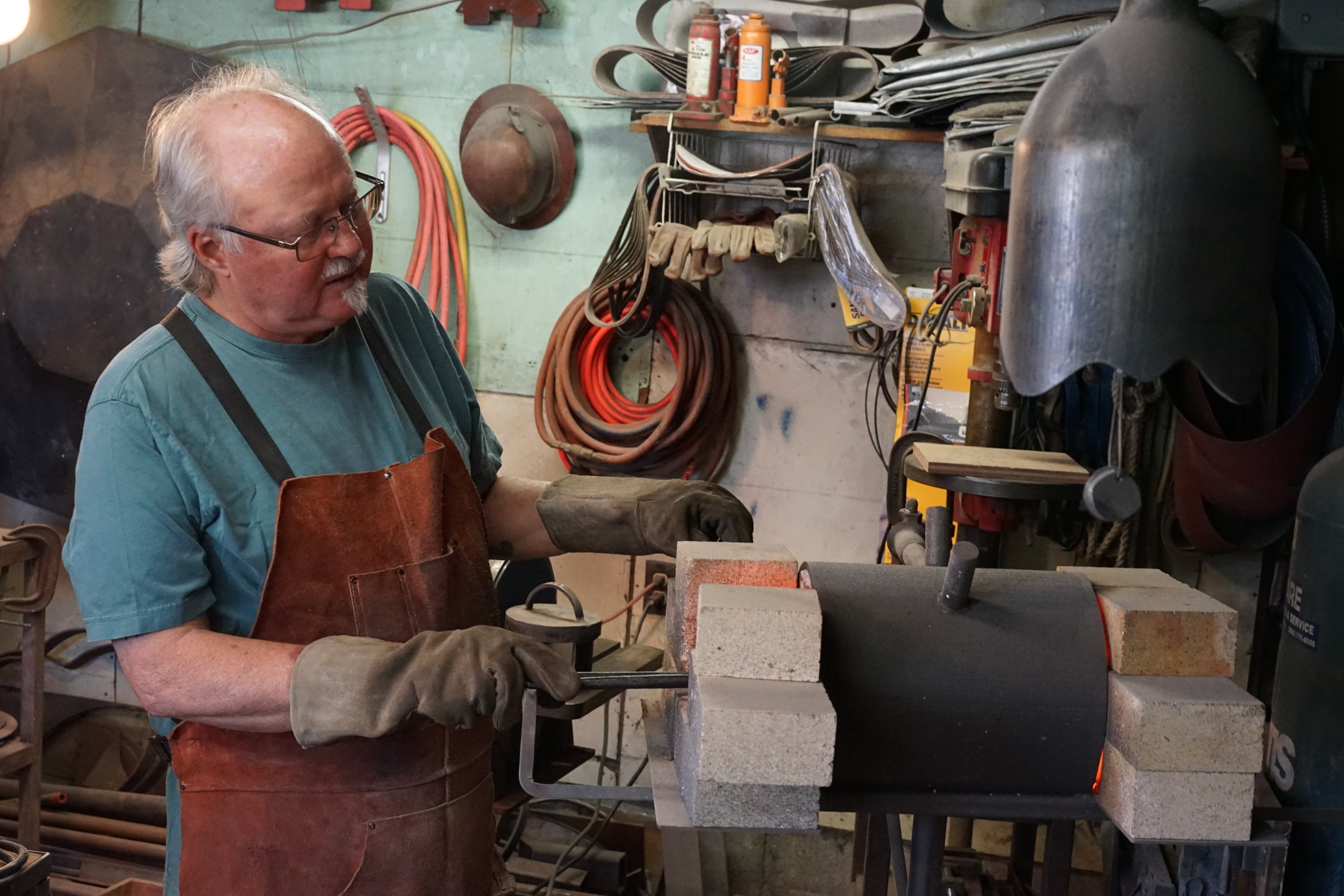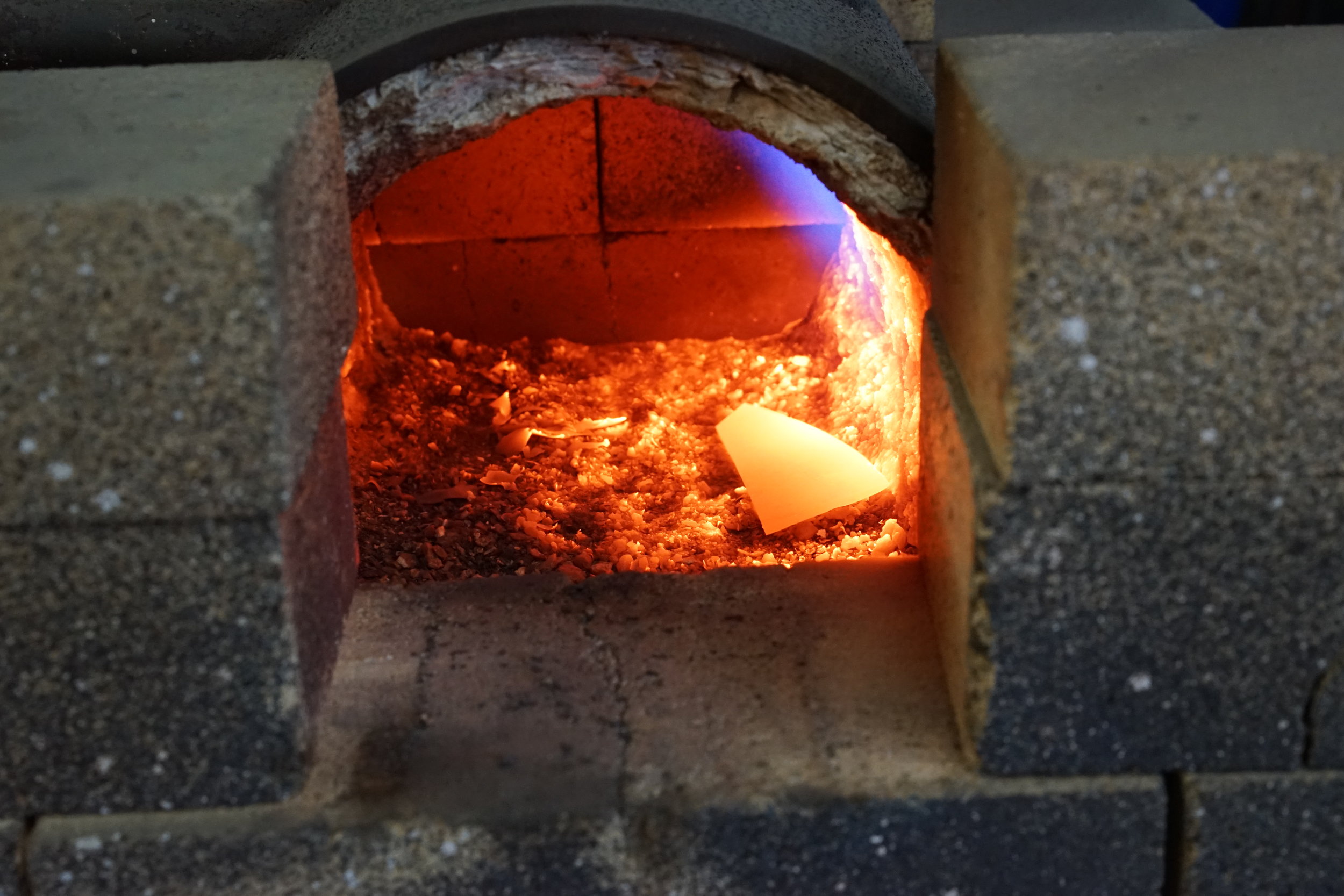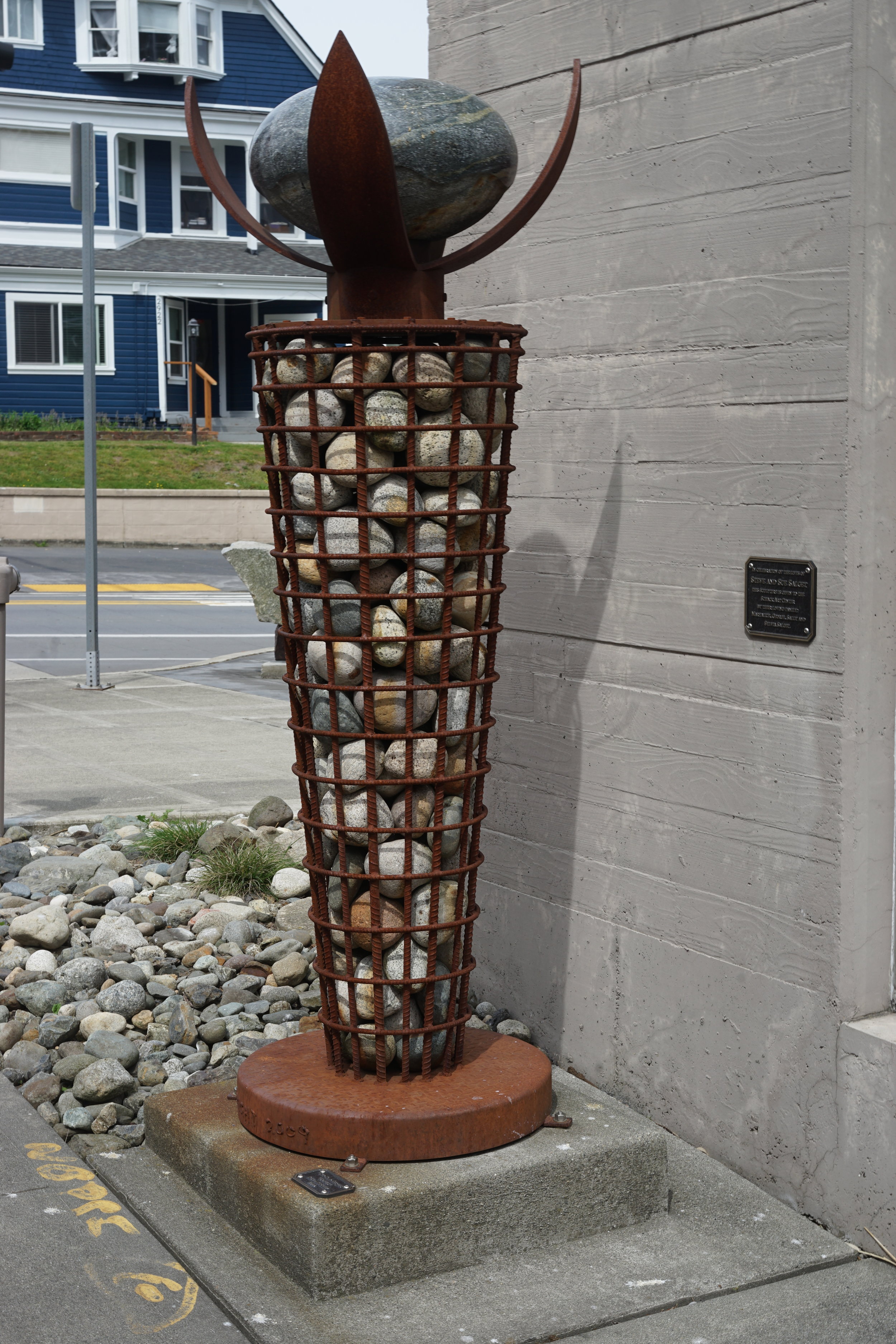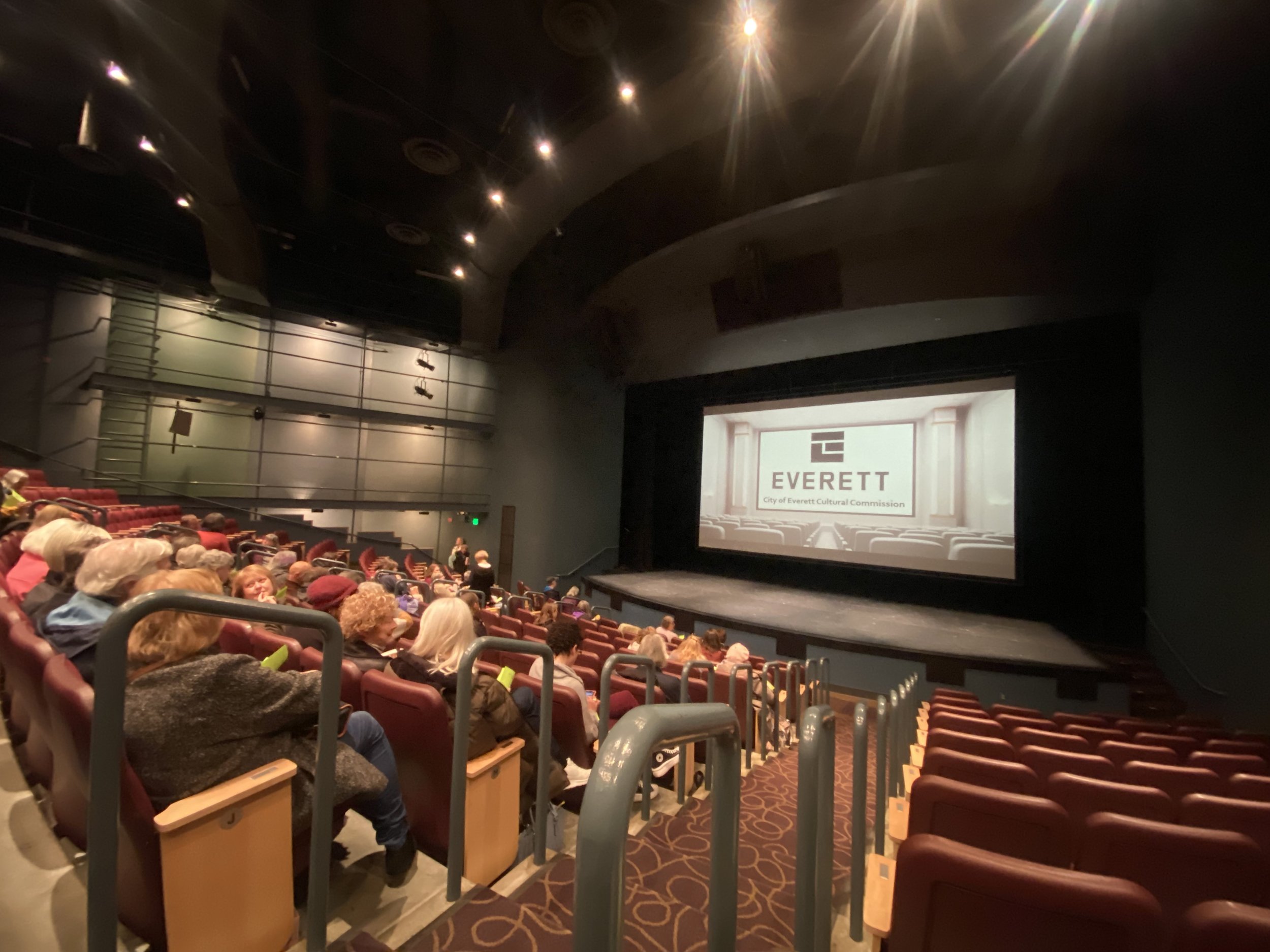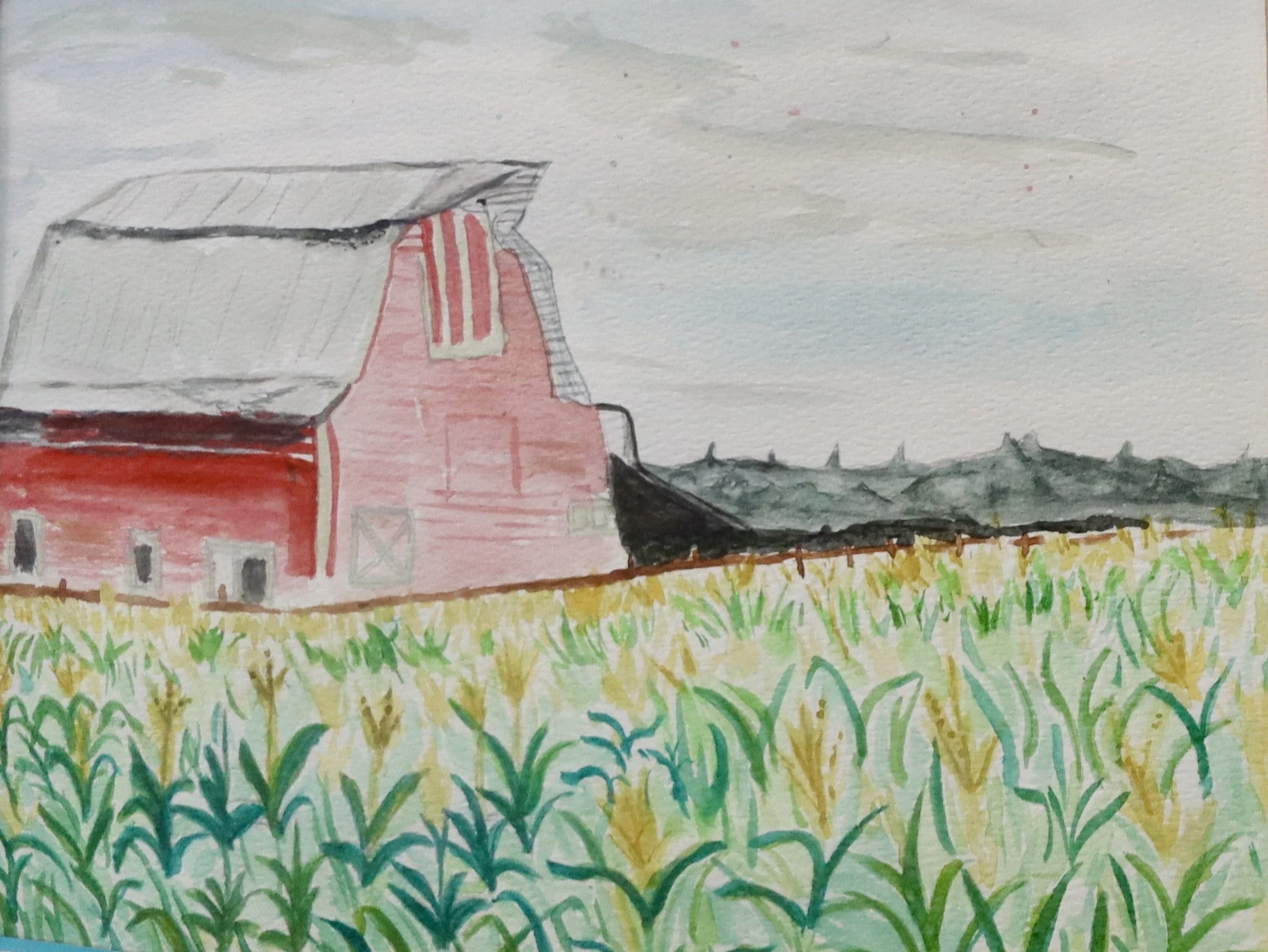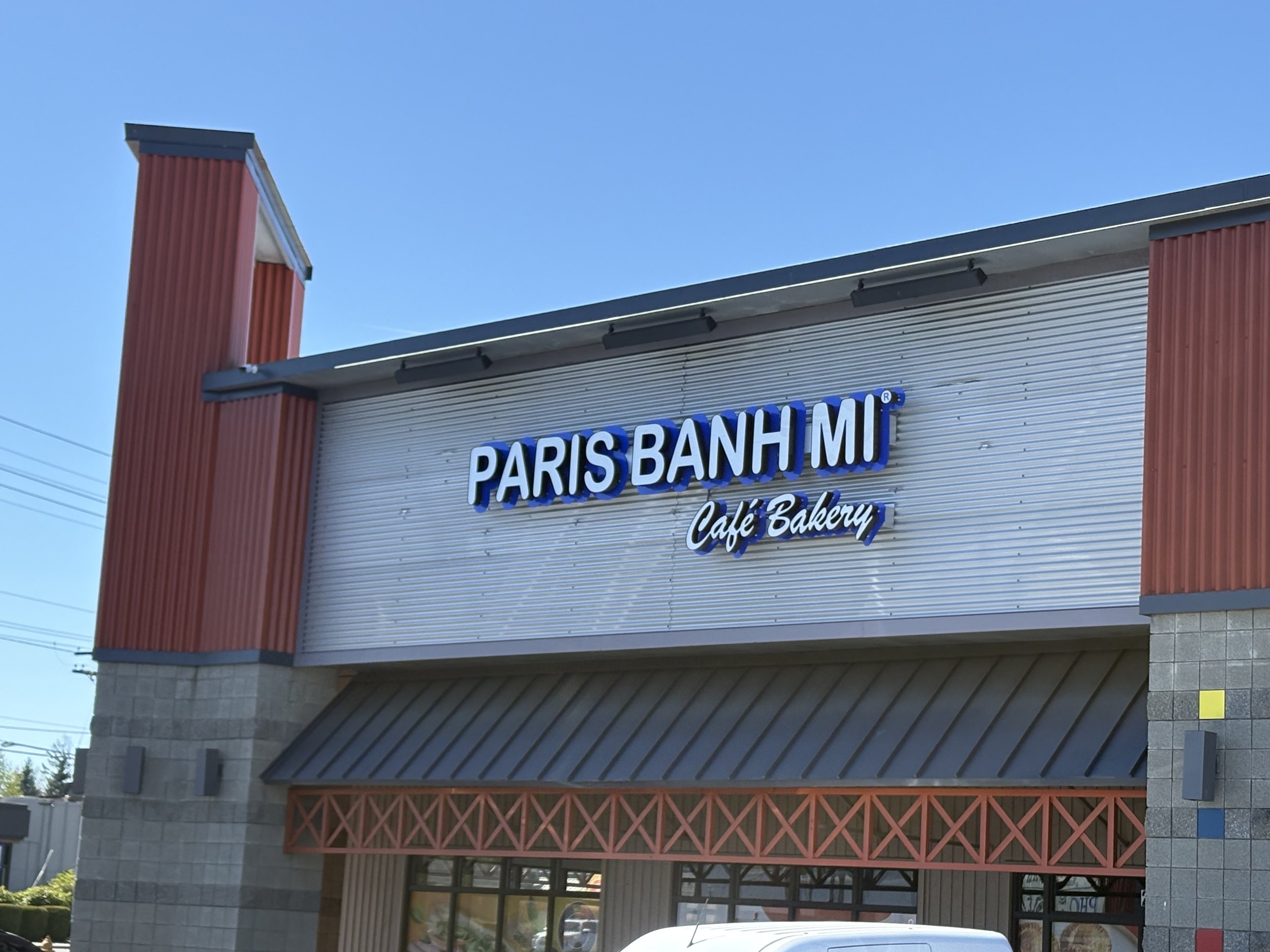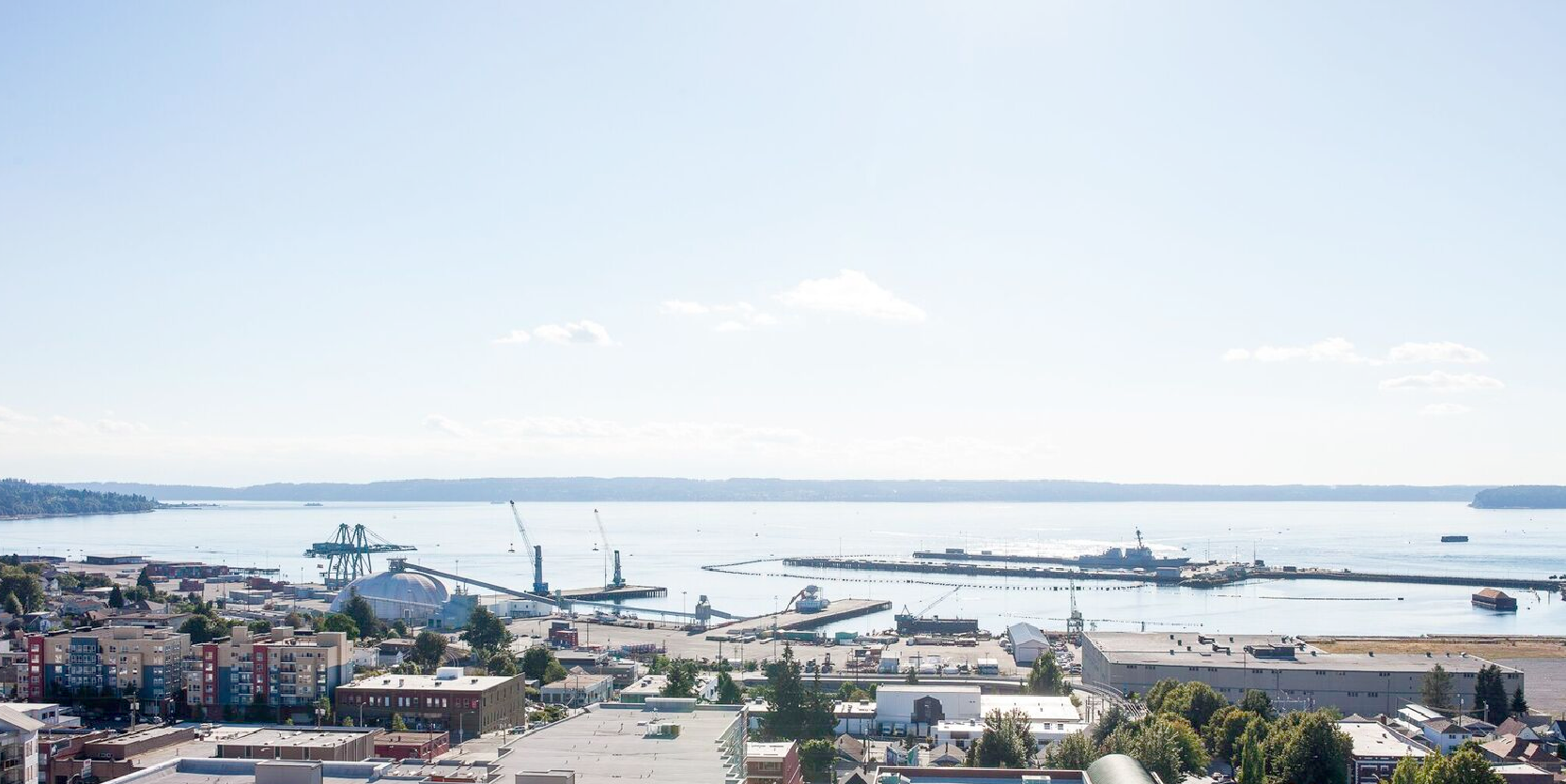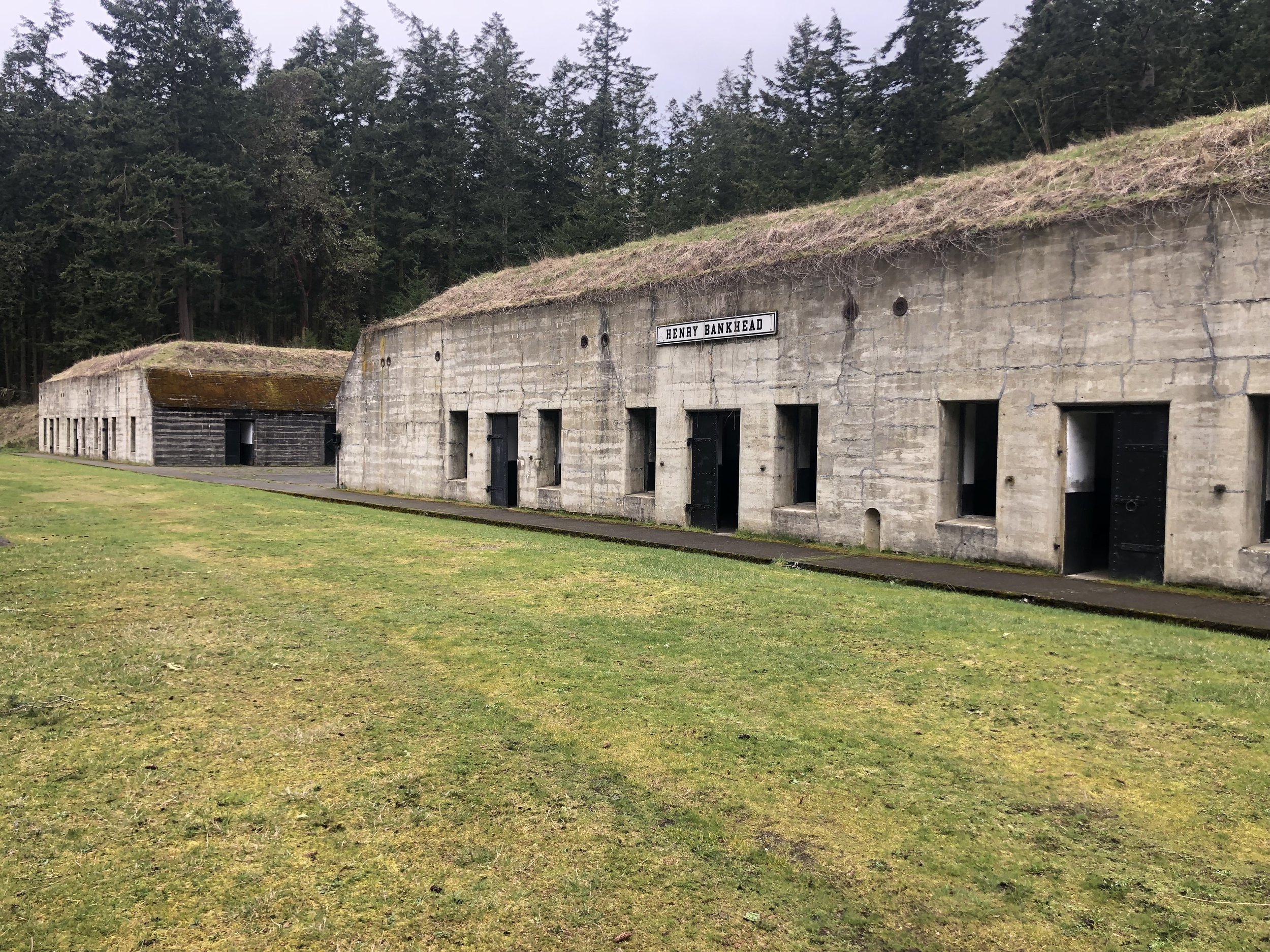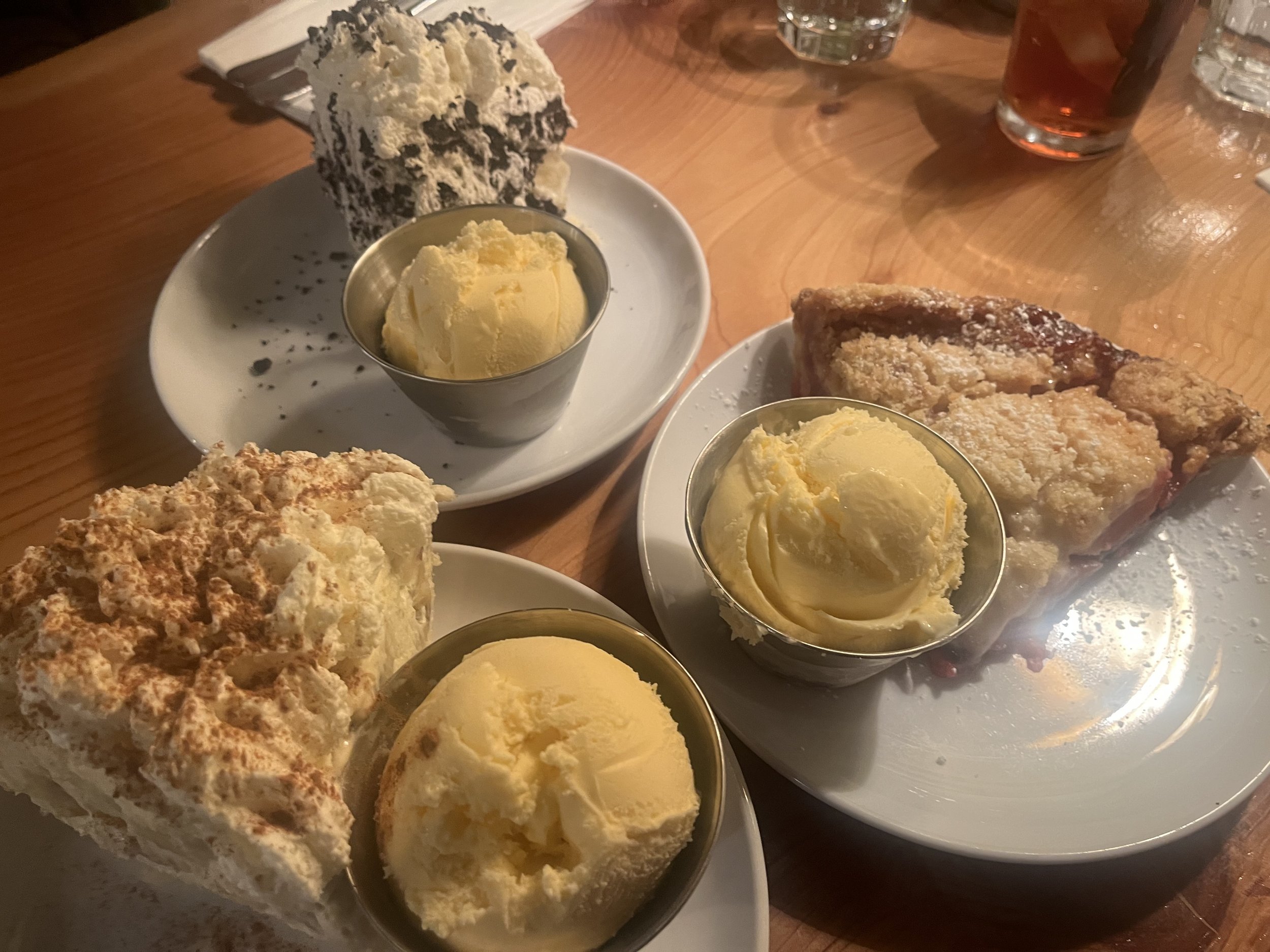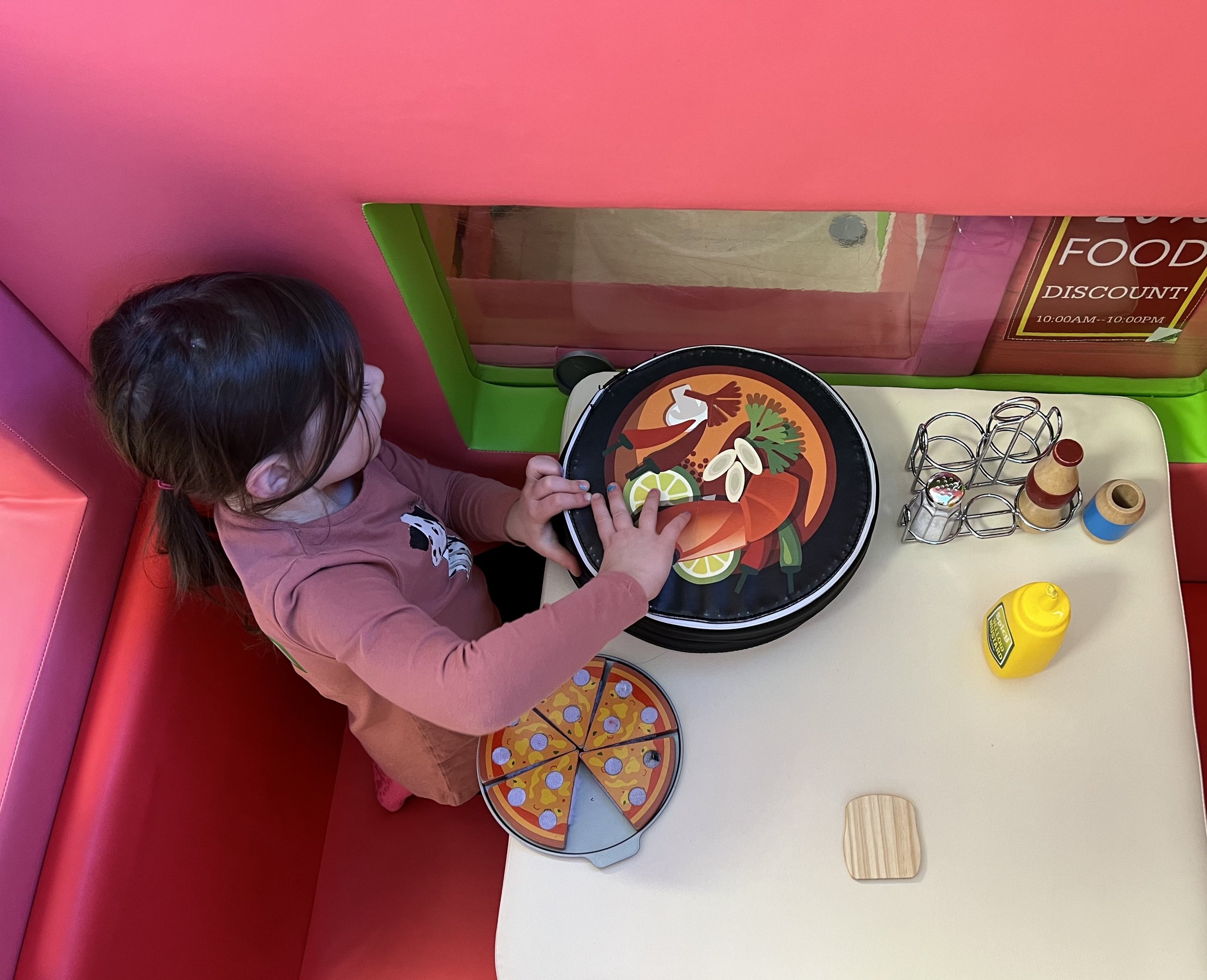Of Fossils and Forges: Reg Akright’s Sculpture “Rocks” Everett
Meet Reg Akright. He’s an Everet-based sculptor who won the Snohomish County Artist of the Year award in 2008.
“Reg” rhymes with ledge, edge, and wedge—which seems significant for someone who creates 3D stone and metal sculptures.
“Art is the glue that bonds and makes sense of my life.”
The thing I like about Akright’s work is it’s “thereness” that it takes up space in such a unique way. It looks both natural and manmade simultaneously. The stone obelisks he creates are person-sized, approachable and could be construed as being humanoid figures.
Vintage Reg Akright in his studio, circa 1991 // Courtesy Northwest Stone Sculptor’s Association
To me, counterintuitively, they appear to be warm and soft, if warm and soft are adjectives that can be attributed to works of stone and metal.
Making this type of art seems to be driven by Akright’s biography.
As a child, Reg collected fossils, agates and petrified wood. This impulse to collect has helped to define his art. He now collects much larger stones that he shapes into his signature forms.
Throughout his life, Reg has worked as a bridge ironworker, an underground miner, a mason’s helper and a bronze chaser. These industrial crafts inform his sculpture, which is created in modular pieces that are ultimately bolted or welded together.
Reg shows off a hand full of belemnite rostrums. Belemnites are ancient cuttlefish-like creatures. Their fossilized rostrum, or “beaks”, occur in large fossil deposits in Wyoming, where Reg grew up. Their bullet shape has become a trademark form in Akright’s sculpture // Courtesy Reg Akright
Reg is my neighbor. When I first moved to the Delta Neighborhood I quickly took notice of the granite sculptures that stand Easter Island-style in his front yard. Then I started noticing his work around town. There are two of Akright’s pieces within a block of my office and one at the Everett Arboretum.
Akright’s works are rooted in blue-collar industrial crafts and inspired by sweeping Western American landscapes—and, as such, are completely appropriate for Everett in general and the Delta Neighborhood, in particular.
I visited Reg in his shop to see how he does what he does.
Reg is most famous for his stone sculpture. But today he’s intensely focused on making his own cutlery.
Knifemaking, I learn at Reg’s workshop, is a complicated business. The would-be knifemaker must be adept at following a “recipe” for tempering different types of alloys. Reg enjoys the challenge.
After a couple of years of buying gear, watching YouTube videos and experimenting diligently, Reg has several dozen knives in his collection—sharp and fine enough to slice a single Post-It note across the grain.
After he shows me his knife collection, we sip sugared coffee from cans in his backyard. Akright mentions that when he first moved to the Delta Neighborhood, he was the only artist around. Now there are five artists in a block radius—proof of a rising class of Everett artists.
Akright’s first sculpture was made with Colorado alabaster. He’s since worked with granite and basalt, which are easily sourced Washington State // Richard Porter
Though he no longer works as much with stone, Reg’s rock sculptures can still be seen around town. One of his pieces was recently installed at the City of Arlington offices.
Reg Akright is now retired from his day job. He seems to be the kind of guy who relentlessly experiments and tinkers. He told me he may start selling his knives if there’s enough demand for them in the market.
For me, it’s cool to see his public artwork around town and think hey, that’s my neighbor. That’s an experience I have more and more the longer I live here. I recognize the ways that people I know contribute to a beautiful, liveable city full of the arts.
This Akright sculpture is located at the Schack Art Center in downtown Everett // Richard Porter
As long as he has a shed full of power tools and dreams of the American landscape, I have a feeling that Everett’s Reg Akright will be working on something.
Here’s Reg in his own words:
“I love the processes involved in my sculptures. The noise and dust and resistance of the material involved in the stone sculpting process... [satisfies] a primal urge. From these violent processes are born pieces I hope have a strong, yet serene, almost meditative presence. In that way, I am able to integrate my intellectual/artistic side with my hard-laboring industrial history. Art is the glue that bonds and makes sense of my life.”
Richard Porter is a writer for Live in Everett.

